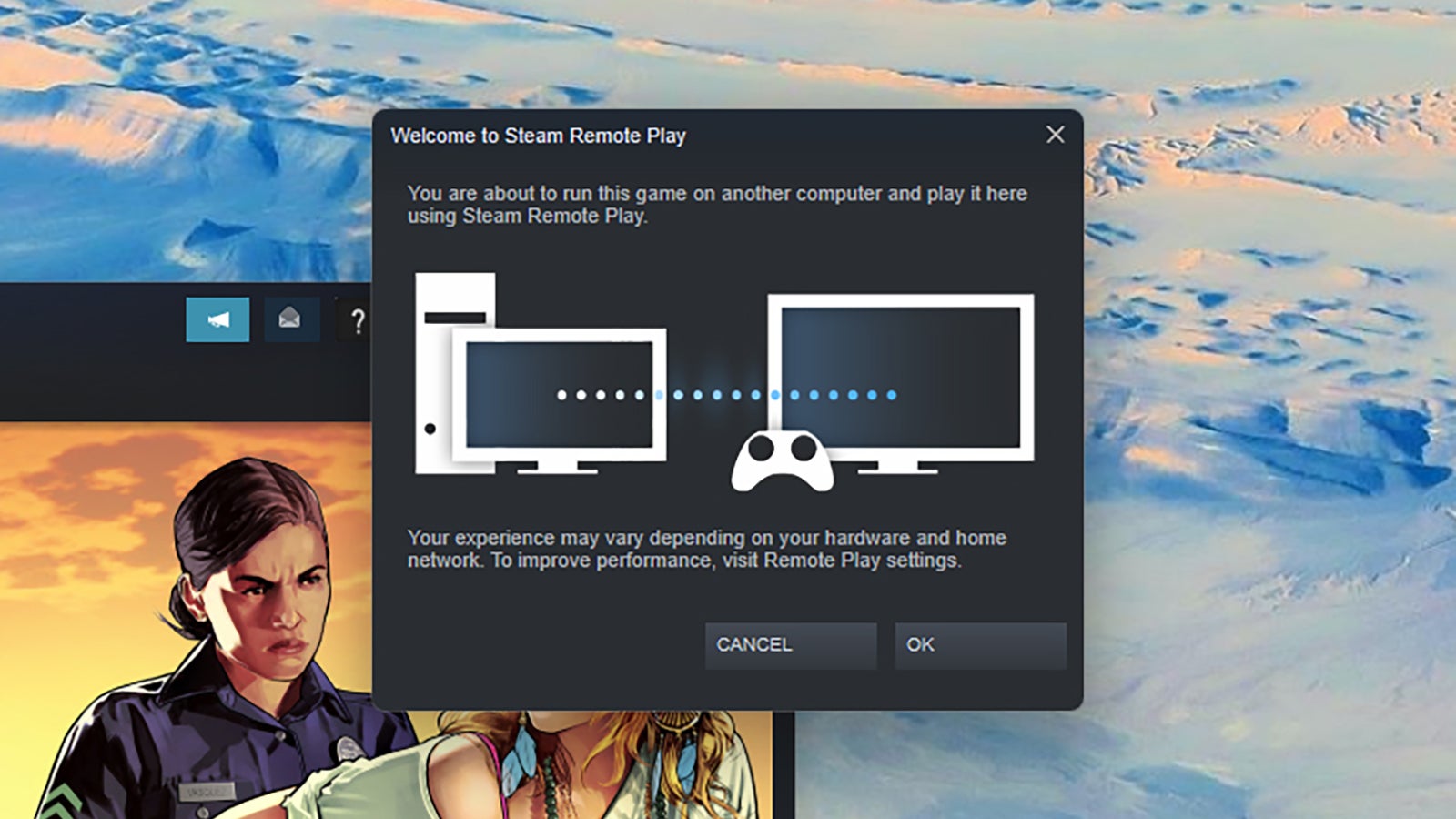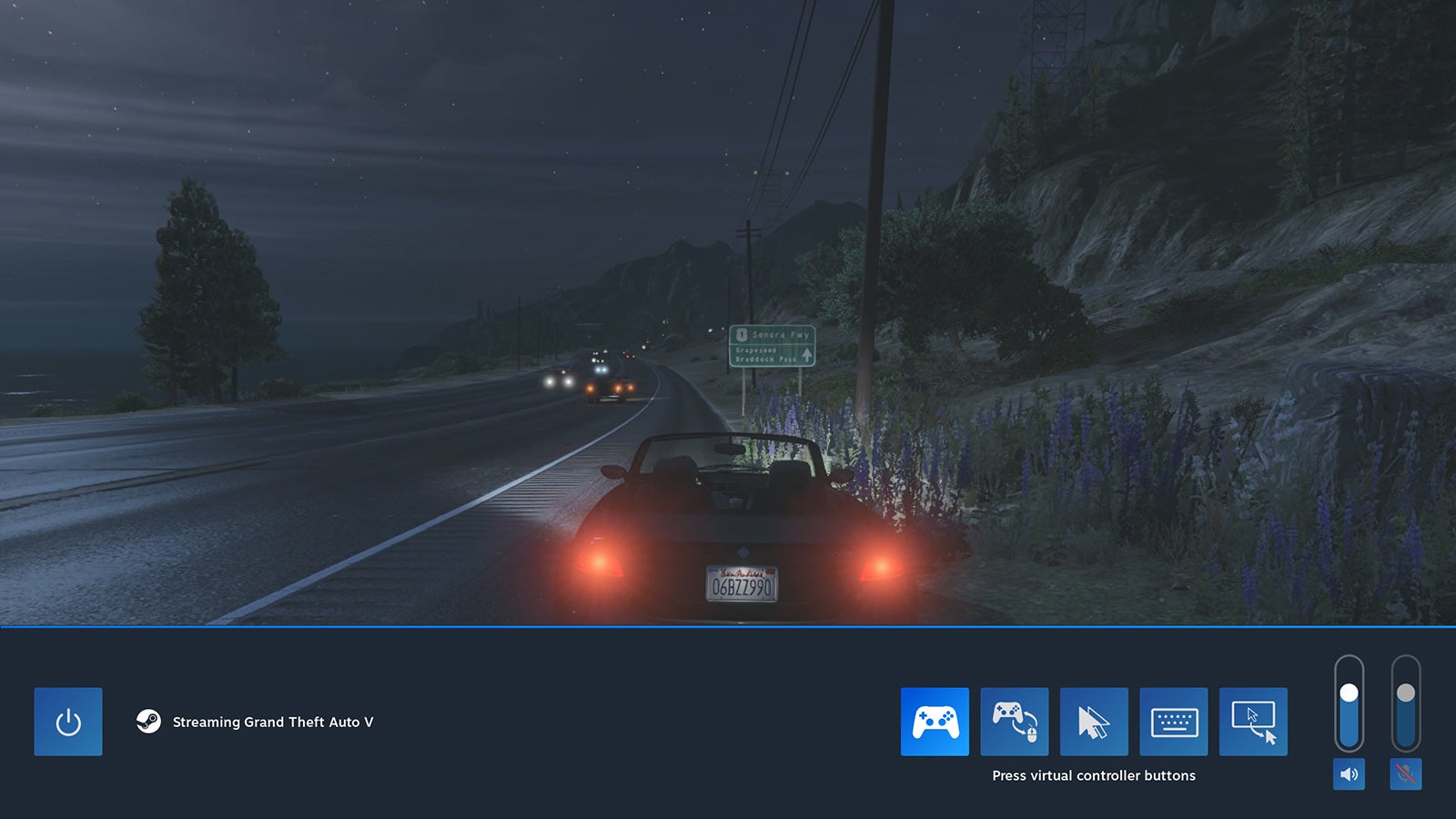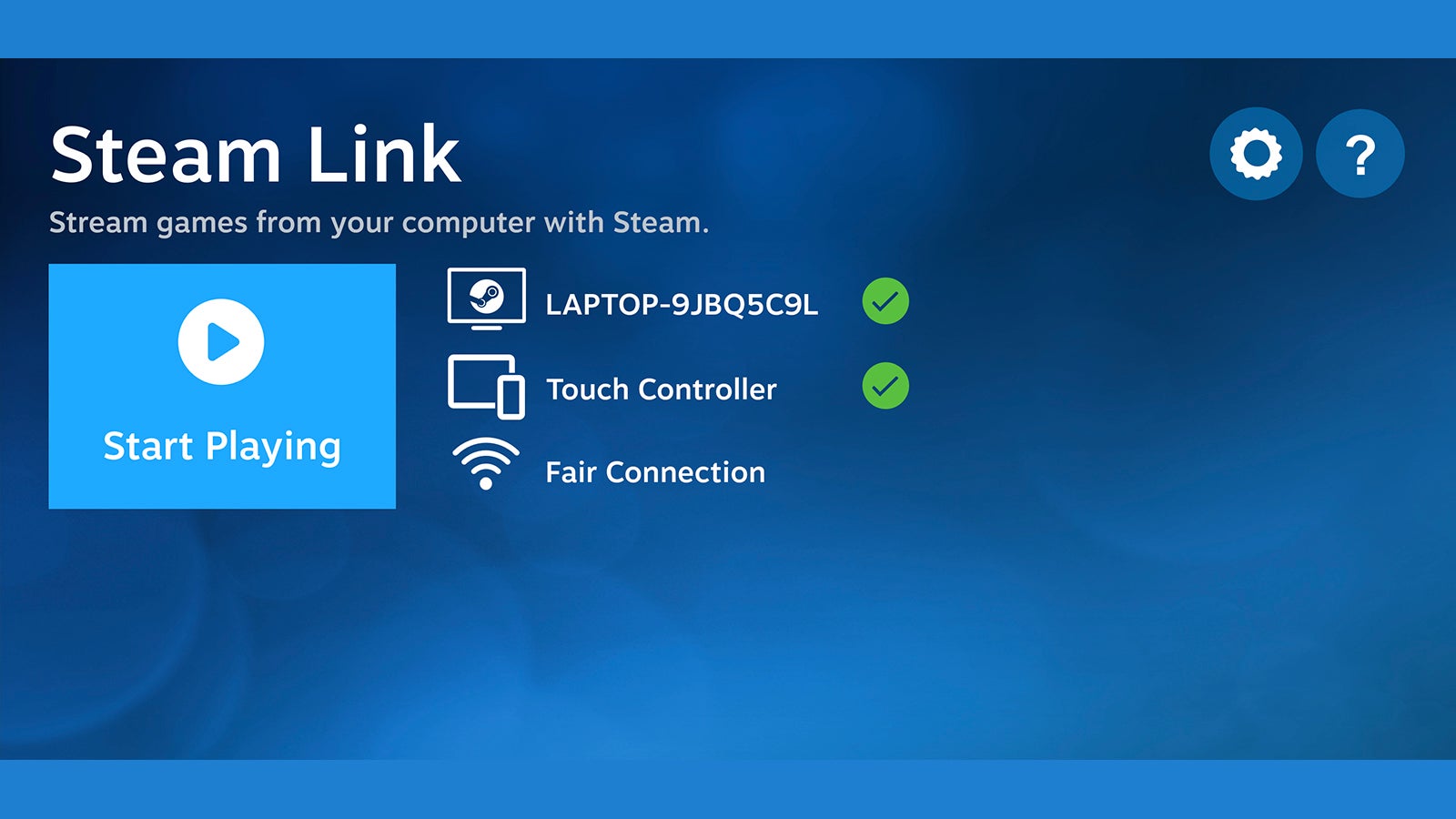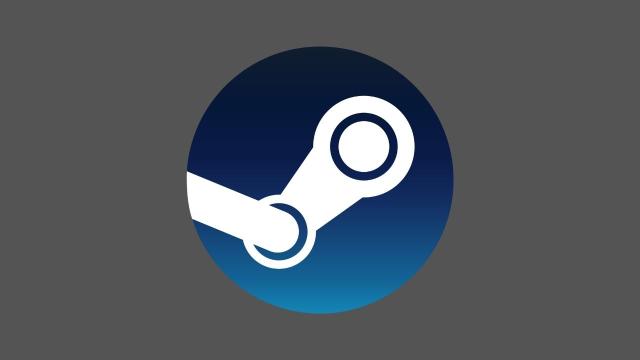If you’re a gamer who uses Steam, then you also have access to the Remote Play service, which essentially allows you to beam gameplay around your home or across the internet to other laptops, phones, tablets, and even big-screen TVs. It’s not difficult to set up, and it means that you can keep on gaming even if you move to another room in the house or another part of the world (internet speeds depending). Here’s how to get started.
First, you need the Steam client installed and configured on your main gaming PC — make sure you have all the games you want to play downloaded, as they’ll be streaming directly from your PC. As this computer will be running the game and will be sending the signal, it needs to stay on at all times and needs to be connected to a decent internet connection. Steam recommends a wired internet connection for the best speeds and stability, but you can get away without one.
Australian internet connections aren’t perfect, so while you might be alright streaming your Steam games within your own home (provided that you have a decent modem and a responsive receiving machine to play on) you’ll need to have a strong internet connection to play games outside of the home (above NBN 100, if you can).
From Steam on this main computer, choose Steam, Settings, and Remote Play. You need to have the Enable Remote Play box checked, and further down the dialogue you can give your main PC a recognisable name and configure various options via Advanced Host Options. You can choose whether or not audio should play on the host computer during gameplay, for example, and how hardware encoding is handled.

Streaming to another computer — an older Windows machine, for example, or a Mac — is as simple as installing the Steam client again and signing in with the same username and password. Your two computers will be automatically connected and ready to go, assuming you’ve enabled remote play in the settings as we’ve already described.
On the computer you’re doing the streaming to, you can pick Steam, Settings, Remote Play, and then Advanced Client Options to manage how the stream is handled. It’s possible to limit the bandwidth used or the resolution the game is displayed in, if you need to. You’ll also see three different modes to choose between — Fast, Balanced, and Beautiful — depending on whether you want to prioritise graphics quality or frame rates.

You don’t need to install any of your games on this second computer — that’s the whole point of streaming them. The Play button will be replaced by a Stream button, and Steam will confirm that you’re not actually playing something locally. The first time you connect you’ll be asked to enter a PIN on the host computer to verify the link.
Pay attention to the dialogue that appears when the connection is first made: It’ll tell you the key to press to bring up the Remote Play overlay, featuring various input and quality settings (this key is typically Esc on a keyboard and the Back key on a gamepad). During gaming, press this key to access the options.
When it comes to smartphones, tablets, and TVs, you need the Steam Link app for Android devices or Apple devices. This works a little differently, because you’re dealing with different screen sizes and different input devices, and for best results you really need to have a proper gaming controller hooked up. Touchscreen controls are available for some games and on certain hardware, but they’re very finicky.

The Steam Link app requires no login, and simply looks for available Steam installations on the same local network. Once a connection has been established to your main gaming computer, you should be able to then use it again whether or not you’re still on your home Wi-Fi, assuming you’re getting a strong enough internet connection.
There are a few caveats: The Steam Link app is available for macOS if you want a more lightweight alternative to the main Steam client, for example, but at the time of writing Steam Link for macOS won’t work outside of a local network (the macOS version was added a while after the Android and iPhone apps appeared). If you want to use it, you need to stay on the same Wi-Fi network as your gaming PC.

When you’re connecting through Steam Link, Steam on the host computer switches to the simplified Big Picture mode, making it easier to navigate around your library and launch games, especially if you happen to be using a smaller screen. Navigation is handled through the on-screen controls or a connected controller, not through tapping the actual screen itself, so watch out for that.
Once your game is actually running, Steam Link streaming works a lot like streaming through the standard Steam client. You can view the Remote Play settings by selecting the cog icon at the top of the front page of Steam in Big Picture mode — again, you can choose between the same Fast, Balanced, and Beautiful options in the regular client.
If everything works as it should, all you really need to do is fire up the Steam client or the Steam Link app on another device to connect to your main Steam installation. One other feature worth mentioning is Remote Play Together, which lets your friends stream games from your Steam PC and join in on supported multiplayer titles.
This article has been updated since it was first published.
